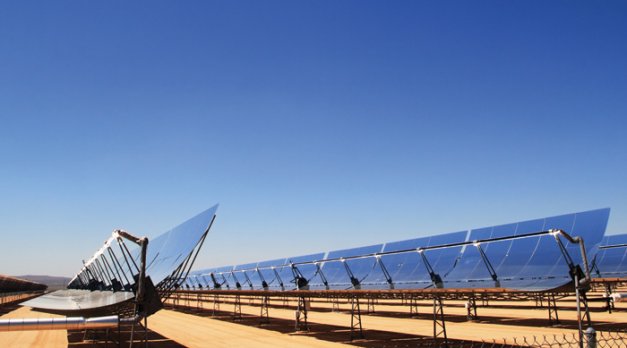by Linda Sechrist
“I’d put my money on the sun and s olar energy. What a source of power!
olar energy. What a source of power!
I hope we don’t have to wait until oil and coal run out before we tackle that.”
~ Thomas Alva Edison in 1931
Energy Engine
Humankind has sought for centuries to harness the sun because the cumulative energy of 15 minutes of its rays shining on Earth could power the world for a year. Following the invention of the solar collector in 1767, a slow, yet steady evolution of other breakthroughs in the quest have included the photovoltaic (PV) effect, observed in 1839, invention of the first solar cell in 1954 and a solar-powered communications satellite in 1958. Solar summits in 1973 and 1977 led to the inception of the Solar Energy Research Institute (now the National Renewable Energy Laboratory), part of the U.S. Department of Energy (DOE) Organization Act signed by then-President Jimmy Carter.
Making the most of the “alchemy of sunlight” that Pulitzer Prize-winning author Daniel Yergin writes about in The Quest: Energy, Security, and the Remaking of the Modern World, has required a global village of inventors, visionaries, scientists and engineers. Pioneering companies have produced technological advancements and reduced manufacturing costs that expand the sun’s services to the world. Today, thanks to solar power, many of the remotest villages in developing countries have electricity.
“Without solar photovoltaics on satellites and those powering the uplink transmitters, downlink receivers and associated equipment on the ground, the isolated residents of developing countries can’t join the modern world,” explains Neville Williams, author of the recently released book, Sun Power: How the Energy from the Sun is Changing Lives Around the World, Empowering America, and Saving the Planet.
As founder of the guerilla nonprofit Solar Electric Light Fund (SELF.org), Williams led the charge for electrifying households in 12 developing countries for 17 years, beginning in 1990, using solar panels and systems funded by grants. “While we were cost-effective and decisive, the results were due to the honest, hardworking and dedicated people we found there,” he advises.
Williams initiated his pioneering advocacy of solar energy as a media specialist with the DOE during the Carter administration and served as the national media director for Greenpeace, in Washington, D.C. In 1997, he co-founded the solar installation company SELCO-India, which has supplied solar home systems to more than 150,000 families in India, Sri Lanka, Nepal, Vietnam and South Africa. In 2005, he founded the solar solutions supplier Standard Solar Inc., of Rockville, Maryland.
Economic Engine
The U.S. currently has an operating capacity of 13,000-plus megawatts of cumulative solar electricity—enough to power more than 2.2 million average American homes. As the industry grows, so does its impact. The Solar Foundation’s Solar Job Census 2013 reported nearly 143,000 solar workers in the U.S.—a 20 percent increase over 2012—at 6,100 businesses in 7,800 locations encompassing every state.
According to Yergin and Williams, the increasing value of nationwide solar installations has “electrified” the U.S. economy. In 2013, domestic solar electric installations were valued at $13.7 billion, compared to $11.5 billion in 2012 and $8.6 billion in 2011. The
top 10 states for annual additions of photovoltaic capacity in residential and commercial applications are California, Arizona, New Jersey, North Carolina, Nevada, Massachusetts, Hawaii, Colorado, New York and New Mexico.
Currently, there are more than 550 major solar projects underway nationally. Under the Obama administration, 16 of these have been permitted on federal lands and will provide 6,058 megawatts of generating capacity.
The two experts expect solar energy to be a major catalyst of global political and economic change. Williams contends that now is the time to fully access this cheapest form of unlimited energy.
“If millions of poor families in developing countries can get their electricity from the sun, why can’t Americans do the same?” he queries.
In a 2002 National Public Radio Planet Money podcast, Yergin, president of Cambridge Energy Research Associates, in Massachusetts, addressed the concerns of everyone that sees the common sense of relying on solar energy. “Technology will be central to solutions for our energy challenges,” he says. “What needs to be done is very, very large, as are the risks and challenges. What we have going for us is the greatest resource of all—human creativity—and for the first time in history, we are going to see it employed on a global scale.”
To learn more, visit SunPowerBook.com and DanielYergin.com.
Linda Sechrist is a senior staff writer for Natural Awakenings. Visit ItsAllAbout We.com for Neville Williams’ recorded interview.





